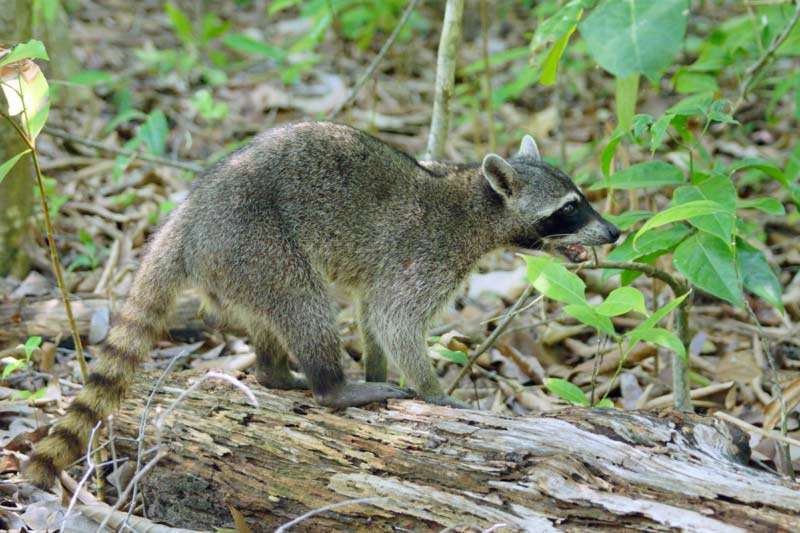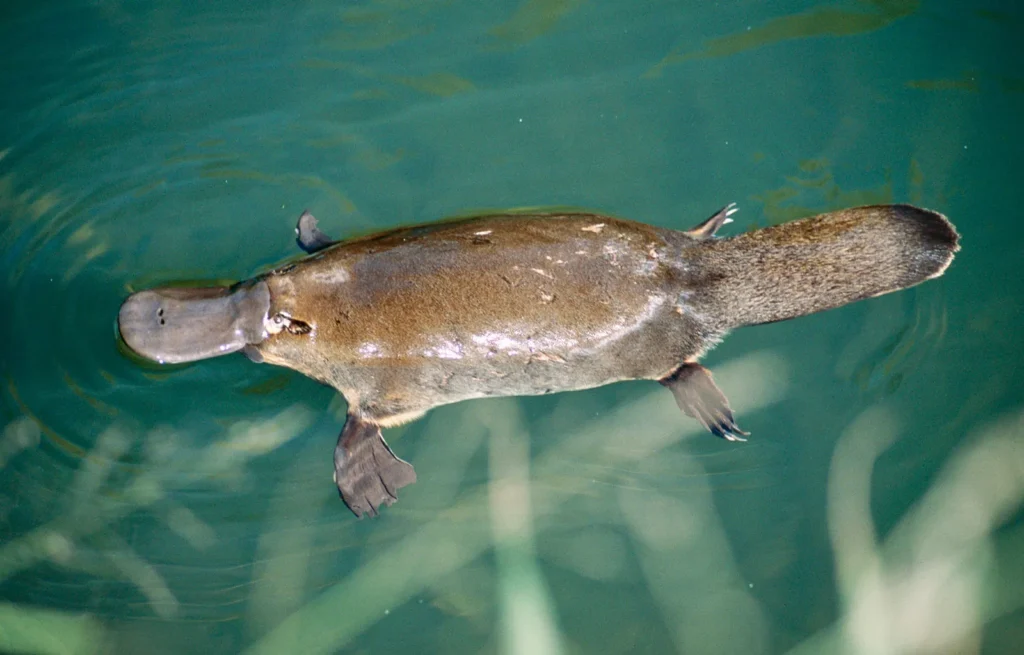
Description
Scientific Name: Procyon cancrivorus
An indigenous raccoon species in Central and South America is the crab-eating raccoon. They share characteristics with their northern relative, the Common raccoon, such as a bushy tail with rings around it and an eye “bandit mask” made of fur. Instead of pointing backward like the Common raccoon, the hair on the nape of the neck faces forward. With their pointed and slender claws, crab-eating raccoons are well suited to an arboreal lifestyle. They have massive cheek teeth with broad, rounded cusps that are also designed for a diet of hard-shelled foods. Their legs and feet are dark brown and thin, and their fur is a brownish-grey colour. The tail has dark and light rings and is bushy. Typically, men are larger than females.

Habitat
The range of crab-eating raccoons, which are found in Central and South America, including Trinidad and Tobago, stretches from Costa Rica south through much of South America east of the Andes down to northern Argentina and Uruguay. These creatures are found in the forest and marshlands. They are almost always discovered close to rivers, lakes, and streams. They live in plains or evergreen forests less frequently, but are rarely seen in rainforests.
Behavior
Crab-eating Raccoons are often lone, nocturnal animals. Despite being largely terrestrial, they do spend a lot of time in trees. Males prefer to be alone, but they can tolerate multiple males near a feeding spot. Young males typically go to various locations during the breeding season, while young females remain in their mother’s territory. These creatures are extremely intelligent and have incredibly keen senses. They utilize their hands as tools and have a highly developed sense of touch. Before eating, they handle and manipulate food with their hands. Raccoons are also known to use their forepaws to dip their food into water to “wash” it before eating.
As Pet/ In Captivity
Crab-eating raccoons in captivity consume a diet high in crustaceans and shellfish, as suggested by their name. Nevertheless, because they are still omnivores, they will also consume eggs, fruits, and even small amphibians.
Table





